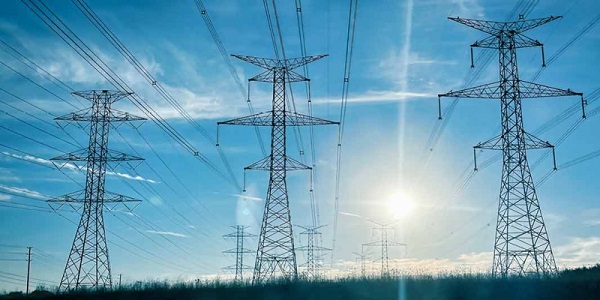Alberta
Province “rewiring” Alberta’s electricity grid for growth

Rewiring Alberta’s electricity market
Alberta’s government is making changes to the province’s electricity market rules to restore the balance between affordability, reliability and sustainability.
Alberta’s government is modernizing the province’s electricity system to put Albertans first, restoring the balance between affordability, reliability and sustainability. To achieve this, Alberta’s government continues to work with its partners on power market reforms. Alberta’s transmission policies are also being updated to improve reliability, increase efficiency, protect ratepayers, and align Alberta with other jurisdictions. Alberta’s government is committed to the province’s unique competitive electricity market, which provides consumers with choice and makes the province a premier destination for investors.
Alberta’s electricity system was designed for a small number of baseload power plants generating reliable electricity. In 2016, Alberta’s accelerated coal phase out was rushed through without proper due diligence. With a growing supply of intermittent renewables instead of natural gas, the province’s power grid and prices can become as volatile as the weather.
The thousands of kilometres of new transmission lines that were required to connect renewables added costs for Albertans, and back-up sources are required to keep the lights on. As demand for electricity only continues to increase, it’s expected that Alberta’s need for electricity could more than quadruple in the coming decades. It is critical that Alberta’s government make changes now to ensure the affordability, reliability, and sustainability of the provincial grid in the decades to come as demand surges.
“Albertans deserve a modern electricity system that prioritizes affordability and reliability. As our electricity supply mix evolves so should our policies, and these updates to transmission policies are essential to ensuring Albertans are well-served by our electricity system for years to come.”
Following three years of engagement with industry, Alberta’s government is making changes to ensure the province’s ratepayers are no longer burdened with the full costs of building new transmission lines. Instead, costs for new transmission infrastructure will be assigned on a cost-causation basis going forward. This will incentivise new power plants to be built in optimal locations that take advantage of existing infrastructure, saving costs for both Alberta ratepayers and job creators. As a result of engagement with industry, Alberta’s government is aligning the province with other jurisdictions by giving the Alberta Electric System Operator (AESO) more market-based tools to increase the efficiency of the province’s grid, prioritizing the use of pre-existing infrastructure.
Updating Alberta’s Transmission Regulation is a significant and necessary step in modernizing the province’s electricity system. To enhance grid reliability, Alberta’s government is also making changes to streamline the process to build and maintain connections between our electricity grid and other jurisdictions. This will reduce red tape and enable critical improvements to happen more quickly. This will also help improve reliability by restoring the electricity grid connections between Alberta and British Columbia, as well as expanding the connections between Alberta and Saskatchewan.
“This is a positive milestone borne out of significant engagement and consultation with industry stakeholders, our partner agencies and the Government of Alberta. We appreciate the tremendous investment of time and effort that everyone has put into this process to reach this point, and we look forward to additional engagement in 2025 to further the detailed market design.”
Over the past year, the AESO has engaged extensively with industry on the technical design of a Restructured Energy Market with direction from Alberta’s government. A key aspect of these market reforms includes moving to a day-ahead market, where power generators will be required to commit their power on the previous day, rather than a couple of hours beforehand, making the system better positioned to respond to power fluctuations. This will increase reliability and stability, helping reduce the risk of potential grid alerts. With these changes, Alberta’s government is ensuring that reliability is prioritized, strengthening the grid so that Albertans can get the power they need regardless of the weather.
“Market design features like a day ahead market can help significantly reduce the likelihood of future grid alerts and will ensure that all necessary generators needed to meet electricity demand are online to provide power.”
Minister of Affordability and Utilities Nathan Neudorf has sent a letter to inform the AESO of the government’s latest decisions on changes to the Transmission Regulation and further guide the ongoing technical design of a Restructured Energy Market. Alberta’s government intends to bring forward legislation to support these changes in the new year. In the meantime, the temporary measures enacted by Alberta’s government on July 1, 2024 will continue to protect Albertans, ensuring reliable power and predictable utility bills.
Quick facts
- The Alberta Electric System Operator (AESO) manages and operates the provincial power grid on behalf of Albertans.
- The Market Surveillance Administrator (MSA) is a public agency that protects and promotes the fair, efficient and openly competitive operation of Alberta’s electricity and retail natural gas markets.
Alberta
Alberta Premier Danielle Smith Discusses Moving Energy Forward at the Global Energy Show in Calgary

From Energy Now
At the energy conference in Calgary, Alberta Premier Danielle Smith pressed the case for building infrastructure to move provincial products to international markets, via a transportation and energy corridor to British Columbia.
“The anchor tenant for this corridor must be a 42-inch pipeline, moving one million incremental barrels of oil to those global markets. And we can’t stop there,” she told the audience.
The premier reiterated her support for new pipelines north to Grays Bay in Nunavut, east to Churchill, Man., and potentially a new version of Energy East.
The discussion comes as Prime Minister Mark Carney and his government are assembling a list of major projects of national interest to fast-track for approval.
Carney has also pledged to establish a major project review office that would issue decisions within two years, instead of five.
Alberta
Punishing Alberta Oil Production: The Divisive Effect of Policies For Carney’s “Decarbonized Oil”

From Energy Now
By Ron Wallace
The federal government has doubled down on its commitment to “responsibly produced oil and gas”. These terms are apparently carefully crafted to maintain federal policies for Net Zero. These policies include a Canadian emissions cap, tanker bans and a clean electricity mandate.
Following meetings in Saskatoon in early June between Prime Minister Mark Carney and Canadian provincial and territorial leaders, the federal government expressed renewed interest in the completion of new oil pipelines to reduce reliance on oil exports to the USA while providing better access to foreign markets. However Carney, while suggesting that there is “real potential” for such projects nonetheless qualified that support as being limited to projects that would “decarbonize” Canadian oil, apparently those that would employ carbon capture technologies. While the meeting did not result in a final list of potential projects, Alberta Premier Danielle Smith said that this approach would constitute a “grand bargain” whereby new pipelines to increase oil exports could help fund decarbonization efforts. But is that true and what are the implications for the Albertan and Canadian economies?
The federal government has doubled down on its commitment to “responsibly produced oil and gas”. These terms are apparently carefully crafted to maintain federal policies for Net Zero. These policies include a Canadian emissions cap, tanker bans and a clean electricity mandate. Many would consider that Canadians, especially Albertans, should be wary of these largely undefined announcements in which Ottawa proposes solely to determine projects that are “in the national interest.”
The federal government has tabled legislation designed to address these challenges with Bill C-5: An Act to enact the Free Trade and Labour Mobility Act and the Building Canada Act (the One Canadian Economy Act). Rather than replacing controversial, and challenged, legislation like the Impact Assessment Act, the Carney government proposes to add more legislation designed to accelerate and streamline regulatory approvals for energy and infrastructure projects. However, only those projects that Ottawa designates as being in the national interest would be approved. While clearer, shorter regulatory timelines and the restoration of the Major Projects Office are also proposed, Bill C-5 is to be superimposed over a crippling regulatory base.
It remains to be seen if this attempt will restore a much-diminished Canadian Can-Do spirit for economic development by encouraging much-needed, indeed essential interprovincial teamwork across shared jurisdictions. While the Act’s proposed single approval process could provide for expedited review timelines, a complex web of regulatory processes will remain in place requiring much enhanced interagency and interprovincial coordination. Given Canada’s much-diminished record for regulatory and policy clarity will this legislation be enough to persuade the corporate and international capital community to consider Canada as a prime investment destination?
As with all complex matters the devil always lurks in the details. Notably, these federal initiatives arrive at a time when the Carney government is facing ever-more pressing geopolitical, energy security and economic concerns. The Organization for Economic Co-operation and Development predicts that Canada’s economy will grow by a dismal one per cent in 2025 and 1.1 per cent in 2026 – this at a time when the global economy is predicted to grow by 2.9 per cent.
It should come as no surprise that Carney’s recent musing about the “real potential” for decarbonized oil pipelines have sparked debate. The undefined term “decarbonized”, is clearly aimed directly at western Canadian oil production as part of Ottawa’s broader strategy to achieve national emissions commitments using costly carbon capture and storage (CCS) projects whose economic viability at scale has been questioned. What might this mean for western Canadian oil producers?
The Alberta Oil sands presently account for about 58% of Canada’s total oil output. Data from December 2023 show Alberta producing a record 4.53 million barrels per day (MMb/d) as major oil export pipelines including Trans Mountain, Keystone and the Enbridge Mainline operate at high levels of capacity. Meanwhile, in 2023 eastern Canada imported on average about 490,000 barrels of crude oil per day (bpd) at a cost estimated at CAD $19.5 billion. These seaborne shipments to major refineries (like New Brunswick’s Irving Refinery in Saint John) rely on imported oil by tanker with crude oil deliveries to New Brunswick averaging around 263,000 barrels per day. In 2023 the estimated total cost to Canada for imported crude oil was $19.5 billion with oil imports arriving from the United States (72.4%), Nigeria (12.9%), and Saudi Arabia (10.7%). Since 1988, marine terminals along the St. Lawrence have seen imports of foreign oil valued at more than $228 billion while the Irving Oil refinery imported $136 billion from 1988 to 2020.
What are the policy and cost implication of Carney’s call for the “decarbonization” of western Canadian produced, oil? It implies that western Canadian “decarbonized” oil would have to be produced and transported to competitive world markets under a material regulatory and financial burden. Meanwhile, eastern Canadian refiners would be allowed to import oil from the USA and offshore jurisdictions free from any comparable regulatory burdens. This policy would penalize, and makes less competitive, Canadian producers while rewarding offshore sources. A federal regulatory requirement to decarbonize western Canadian crude oil production without imposing similar restrictions on imported oil would render the One Canadian Economy Act moot and create two market realities in Canada – one that favours imports and that discourages, or at very least threatens the competitiveness of, Canadian oil export production.
Ron Wallace is a former Member of the National Energy Board.
-

 International6 hours ago
International6 hours agoIsrael’s Decapitation Strike on Iran Reverberates Across Global Flashpoints
-

 Business1 day ago
Business1 day agoThe carbon tax’s last stand – and what comes after
-

 International1 day ago
International1 day agoPentagon agency to simulate lockdowns, mass vaccinations, public compliance messaging
-

 Business16 hours ago
Business16 hours agoTrump: ‘Changes are coming’ to aggressive immigration policy after business complaints
-

 illegal immigration16 hours ago
illegal immigration16 hours agoLA protests continue as judge pulls back CA National Guard ahead of ‘No Kings Day’
-

 Business1 day ago
Business1 day ago84% of Swiss hospitals and 60% of hospitalizations are in private facilities, and they face much lower wait times
-

 International2 days ago
International2 days agoElon Musk expresses ‘regret’ over attacks on Trump that ‘went too far’
-

 National1 day ago
National1 day agoCarney promotes MP instrumental in freezing Freedom Convoy donors’ bank accounts






